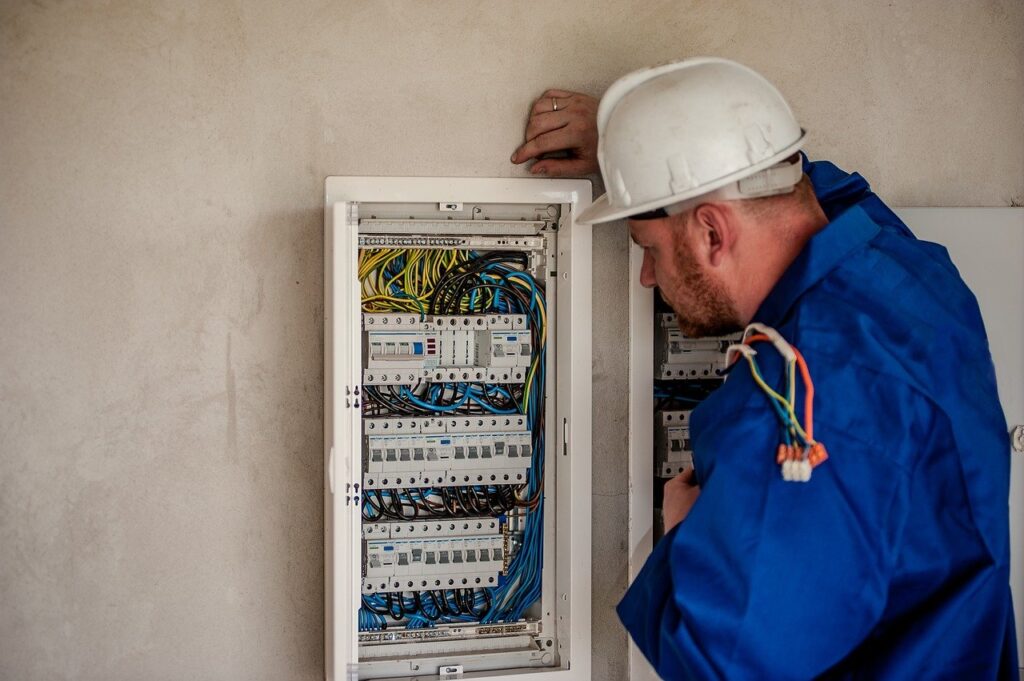The Path to Becoming an Electrician's Apprentice in Canada
The path to becoming a licensed Electrician in Canada is a journey worth taking, but is often fraught with hurdles and hoops that you have to jump through. One important hurdle or step in the journey to becoming a licensed journeyperson is to The Path to Becoming an Electrician’s Apprentice in Canada. Once that is complete you are only a hop and a skip from becoming a fully-fledged skilled trade worker.
Now, one thing you need to keep in mind is that there are a few different ways in which you can achieve the electrician apprenticeship. In this article we will cover one of the more mainstream ways in which you can complete your apprenticeship. Remember, this is only one path and is aimed at giving you somewhat of a holistic understanding of the process.
Table of Contents
ToggleThe Journey of a Journeyman is Never Straight Forward: How to Begin
The thing with becoming an electrician anywhere in the world, and not just in Canada is that there is an element of job security to it. People will always need electricity and there will always be something to fix in that regard. So in that sense, it’s a pro, but on the other end of the spectrum it also has dangers, one of the major ones, obviously, electrocution. All the risks and dangers aside, if you still decide to proceed here are a few ways in which you can do it.
The easiest way is to become an electrician’s apprentice. Learn on the job, get paid while you also gain work experience. It’s quite straightforward, but there are no guarantees that this will lead to an apprenticeship down the line.
The other way is to apply through a union body of electricians or enroll yourself in an institution that offers certificate or diploma programs for the same. For example, if we take the case of the Construction and Maintenance Electrician trade, you will have to apply to become a member of the Ontario College of Trades in Canada as they are the ones that regulate it. Through them you can get your Certificate of Qualification to work in the field legally.
Here are the steps to attain your Certificate of Qualification:
1) Become a member of the College of Trades.
2) Complete your electrician apprenticeship and get the ‘Certificate of Apprenticeship’.
3) Next, you will need to sit for the electrician certification exam and pass it.
4) Once you pass it you need to meet the registration requirements.
5) Lastly, you need to apply to become a certified and registered journeyperson in the trade.

The fact of the matter is, it sounds quite simple and straightforward as far as the process goes, but the most important part of this process cannot be done as a step. The most essential criteria is your ability to retain and display an in-depth knowledge of the trade. At the end of the day it is a skill trade.
Alternative Educational Experiences/Routes You Should Consider
You could alternatively apply for becoming an electrician’s apprentice through the International Brotherhood of Electrical Workers (IBEW), the Independent Electrical Contractors (IEC), or the Association Building Contractors (ABC). Whichever you choose you will need to write an entrance exam. You will also need to pass a drug test followed by a one-on-one interview.
The tricky bit with Union apprenticeships is that they are notoriously competitive and applicants are only accepted once or twice a year. Now on the other hand if you consider a certificate or diploma course through a vocational school, then it may be a more lengthy process.
The cost of this can also vary depending on the institution. Again, a more expensive course does not necessarily guarantee a better job as an electrician in Canada. One thing that you can be sure of is that any of these paths will definitely test your commitment to becoming a fully licensed electrician and landing an Electrician job in Toronto, Ontario or anywhere else in Canada.

Getting Your Electrician Apprenticeship Rolling
Speaking of enduring, you should know that it typically takes around four to five years of apprenticeship till you can be licensed. This includes your course work, on-the-job training, and the apprenticeship of course.
To break it down you would on average spend around 9,000 hours or about five years completing all this. This is split with the majority of the time going towards your on-the-job training, while a part of the time goes for the course work and theoretical studies.
So, basically, being an electrician’s apprentice consists of working in the day and studying at night. Like we mentioned before, it is a demanding path. The biggest upside though is that you get paid to learn. Yes, you will be working too but it is to your benefit. Either it is a win-win.
Once you have completed both the coursework and the training, your employer will be the one to sign off on it. They will have the final say on whether you have actually achieved the goals and if you have the required skills to do the job.
What You Need to Learn
Pre-Apprenticeship Electrician Training: Increasing Your Chances of Getting Hired
It’s tricky to get hired even with a successfully becoming electrician’s apprentice. However, you can increase your chances of landing the job you want. How? Complete a pre-apprenticeship course. Most of industry-leading employers are looking for apprentices who already have a basic knowledge of blueprints, the operation of power tools, installation techniques, and so on.
If you think about it from the perspective of the manager it makes sense; would you want to hire a candidate, apprentice or not, who you have to train up from scratch? It’s a tough prospect to land a job on an apprenticeship alone.
The advantage of doing such a program is that you learn the basics like blueprint reading, using power tools, installation methods and you get a safety certification to boot. Now, if you go for your apprenticeship it just acts as a bonus course and more work hours under your belt.
Fixing Your Expectations
You gain the advantage of coming out the gate with the most amount of experience possible for someone who has just started in the industry. This is a must-have as far as maintaining an edge goes. Additionally, these pre-courses have the advantage of being relatively shorter – about 24 weeks or so. Make sure you apply for such courses through a recognized and reputed trade school in Canada.
Just to reiterate, whatever path you choose to try to attain your apprenticeship as an Electrician, know that it will take time and work. Once you qualify and land that job that you want, you also need to continuously prove yourself to the company you work for to prolong your tenure. On average the salary of an electrician is around $30 to $40 per hour, depending on the company and the state you work in.
It also depends on the field you specialize in, be it industrial, commercial, or if you are a general contractor. You could become an independent agent but that comes with its own set of risks and benefits.
“A long apprenticeship is the most logical way to success. The only alternative is overnight stardom, but I can’t give you a formula for that.“ – Chet Atkins, American Musician
Coming back to the Ontario College of Trades there are many essential skills that you need to learn how to execute and excel with during your apprenticeship. These include learning to read blueprints, applying electrical codes and regulations, working on a range of equipment like transformers, generators, conductors, cables and so on.
You also need to have mastery over things such as instrumentation, installation methods, grounding, bonding and also be able to work with fire alarms, large-scale building systems amongst other things.
Fixing Your Expectations
The training methodology and learning process all depend on the trainer you are assigned to. He or she will be the overseer of which tasks you have to work on every day. It also depends on what you are working towards. Are you aiming to find work with a service company or a construction and maintenance company.
The end-goal remains the same though. You need to master the field in order to work in it safely. Also keep in mind that you could start your apprenticeship with one company and end up finishing it with another. It’s all experience at the end of the day. So, there you have it, these are just some of the things you should keep in mind when attempting to become an electrician’s apprentice in Canada.






